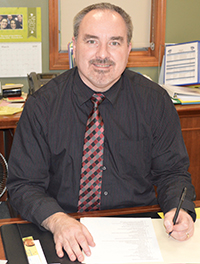On May 2, voters in the Kent ISD region will be asked to approve a 0.9 mill tax for local school districts, generating $211 per student to maintain programs, improve services and meet other needs. School News Network is offering information on what the millage means for each of the 20 districts in the Kent ISD. Today we focus on Sparta Public Schools. SNN spoke with Superintendent Gordie Nickels.
How much would your district gain from the millage in the first year?
$520,000
What would you spend the increased revenue on, and how would this help students?
“We do want that money spent in the classroom,” Nickels said. “We’re going to look at our at-risk students, make sure we have sufficient support in place for them. We also want to look at our high-performing students and what kinds of opportunities can we put in place for them. Sometimes I think they get overlooked.”
The district would consider additional materials to support at-risk students, Nickels said, while materials and new staff would be considered to support the large English-language learner population.
At the high school, the district would look at expanding its existing early college partnership with Ferris State University to enroll more students, while considering possible partnerships with other colleges. Nickels said class sizes are too large, and that ideally he would like to hire new staff to reduce them.

Nickels said he also would like to provide more support for the arts, including new musical instruments and new materials for visual arts.
“For many kids that’s a very strong area for them,” he added. “We want to continue to support them, because for there to be things in school that are important to them, that motivates them to work through some of those content areas that aren’t so easy.”
If the millage were to fail, what changes or cuts would you have to make next school year?
“We wouldn’t be able to run things as we did this year, wouldn’t have the revenue to support that, wouldn’t be looking at adding to at-risk (student support), performing arts or anything,” Nickels said. “It could mean class sizes go up a bit; it would have an impact.”
The district would have to consider cutting costs, Nickels added, but would attempt to keep those cuts from affecting instructional programs.
What objections have you heard, if any, from your community, and what is your response?
Nickels said he has not heard much feedback for or against the proposal. “Whatever they would decide, I would respect that as long as it’s based on accurate information.”
He wants the community to understand the funds would be targeted directly at specific needs. However, he added, “If you’re saying, ‘I see (the need) but right now for my family we can’t afford it,’ I’ve got to respectthat. Everybody’s in a different situation.
“If I didn’t feel that this was very important and vital to things we are doing, it’s not something I would be supporting,” he emphasized. “Our state has not kept up with what our costs and needs are. My job is to make sure we’re providing the best opportunities we can for our kids.”
CONNECT
Strong Schools, Strong Communities informational website









